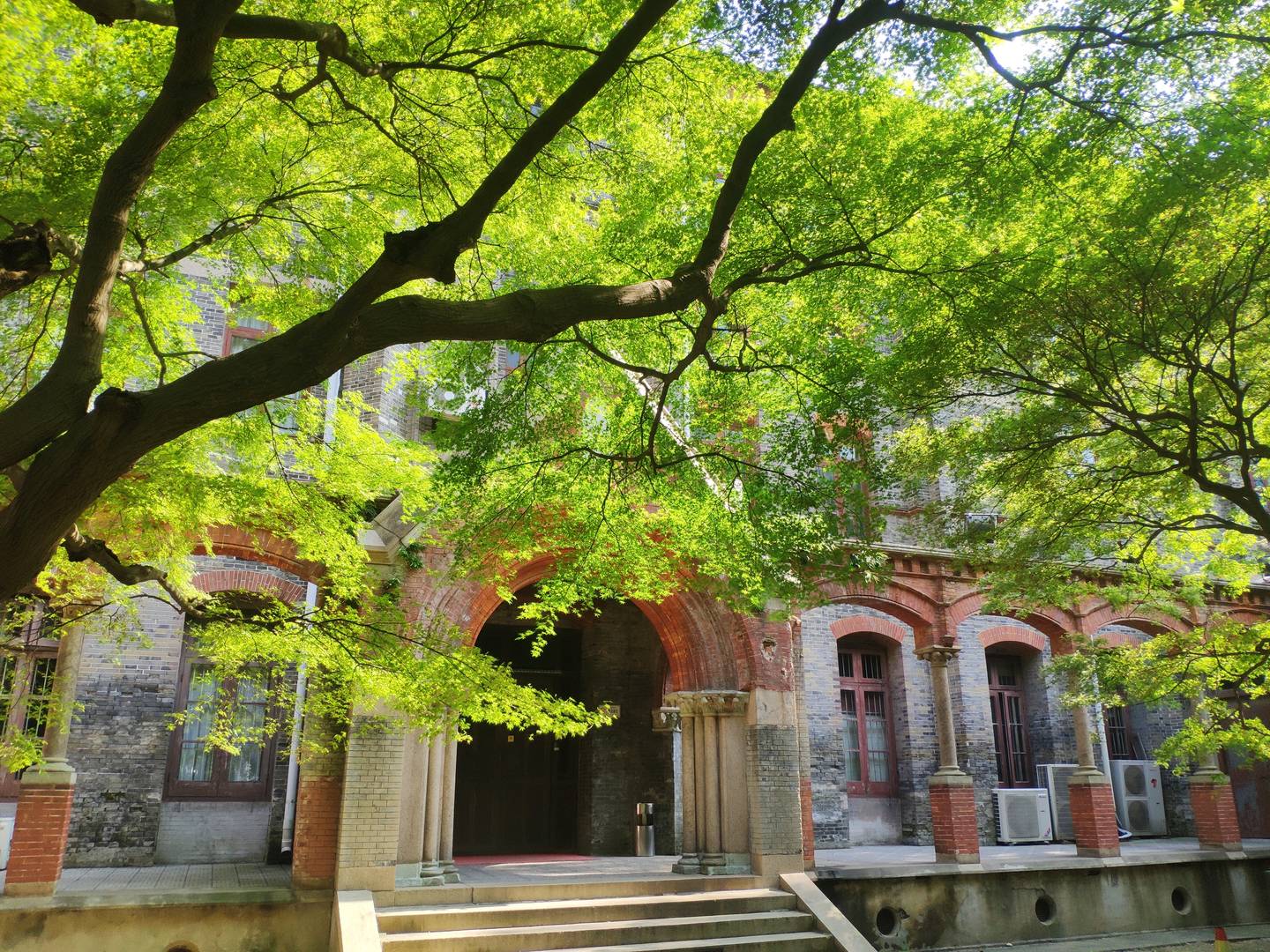题目思路:
我们可以想到每个数字都一可以用二进制表示
那么就是由1,2,4,8,······可以发现正好是二叉树一直走左支
题目中的N <= 2^k,所以保证题目有解
但是这道题并不是选和不选,而是加还是减
1.一直走左儿子,加起来为sum。sum一定为奇数
2.如果N为偶数,我们在最后走右儿子
3.用cha = sum - N,这时我们能保证cha是一个偶数
4.易知减去一个节点n,就相当于sum-2*n
5.所以我们cha/2(cha是偶数,可以整除),这样减去 cha/2 节点值就可以了
6.cha/2一定比sum小,所以用节点一定可以表示出来cha/2,同样转化二进制表示就可以找到改变的节点
题目代码:
1
2
3
4
5
6
7
8
9
10
11
12
13
14
15
16
17
18
19
20
21
22
23
24
25
26
27
28
29
30
31
32
33
34
35
36
37
38
39
40
41
42
43
44
45
46
47
48
49
50
51
52
53
54
55
56
57
58
59
|
LL tpow[MAX];
int ans[MAX];
void mycase(int n)
{
cout << "Case #" << n <<":" <<endl;
}
int main()
{
std::ios::sync_with_stdio(false);
cin >> T;
int CNT = 0;
for(int i =0;i < MAX;i++)
{
tpow[i] = 1 << i;
}
while(T--)
{
CNT++;
cin >> N >> M;
LL sum = 0;
int flag = 0;
for(int i =0;i < M;i++)
{
sum += tpow[i];
ans[i] = 1;
}
if(!(N&1)) flag = 1;
sum += flag;
LL cha = sum - N;
cha >>= 1;
int i = 0;
while(cha)
{
int x = cha&1;
ans[i] = ans[i]-x;
i++;
cha>>=1;
}
mycase(CNT);
for(int j = 0;j < M-1;j++)
{
cout << tpow[j] << " ";
if(ans[j]) cout << "+"<<endl;
else cout << "-" <<endl;
}
cout << tpow[M-1] + flag<< " ";
if(ans[M-1]) cout << "+"<<endl;
else cout << "-" <<endl;
}
return 0;
}
|
题目思路:
就循环找一下每俩个相同字母之间的距离就好了
题目思路:
计算出每一段的数量
计算出初始的每一段的平方和sqsum以及初始的ans
我们把情况分为三种
- 当前这一段比前面一段大,那么前面给后面一位
- 当前这一位比前面小并且不等于一,把后面给前面一位
- 当前这一位等于1,改变这一位,就能联通前后
但是第三种情况需要注意当i=N是,后面已经没有了段,需要重置为0,如果上一组数据比这一组多的话的就会出问题,卡了好久,因为想着数组覆盖就没有初始化
if(i+1>=cnt) sqsum[i+1] = sum[i+1] = 0;
题目代码:
1
2
3
4
5
6
7
8
9
10
11
12
13
14
15
16
17
18
19
20
21
22
23
24
25
26
27
28
29
30
31
32
33
34
35
36
37
38
39
40
41
42
43
44
45
46
47
48
49
50
51
52
53
54
55
56
57
58
59
60
61
62
63
64
65
66
67
68
69
70
71
72
73
74
75
76
77
78
79
80
81
82
83
84
85
86
87
88
89
90
91
92
93
| LL T,N,M;
LL sum[MAX];
LL sqsum[MAX];
void mycase(int n)
{
cout << "Case #" << n <<": ";
}
LL befores(string str,int *cnt)
{
LL ans = 0;
for(int i = 0;i < str.size();i++)
{
if(i > 0)
{
if(str[i] == str[i-1])
{
sum[*cnt]++;
}
else
{
sqsum[*cnt] = sum[*cnt]*sum[*cnt];
ans += sqsum[*cnt];
(*cnt)++;
sum[*cnt]++;
}
}
else sum[*cnt]++;
}
sqsum[*cnt] = sum[*cnt]*sum[*cnt];
ans += sqsum[*cnt];
(*cnt)++;
return ans;
}
int main()
{
std::ios::sync_with_stdio(false);
cin.tie(0);
cout.tie(0);
cin >> T;
int CNT = 0;
while(T--)
{
CNT++;
LL ans = 1;
string str;
cin >> str;
fill(sum,sum+MAX,0);
int cnt = 0;
LL tempsum = befores(str,&cnt);
LL tempsq;
for(int i = 1;i < cnt;i++)
{
if(sum[i] <= sum[i-1])
{
if(sum[i] == 1)
{
if(i+1>=cnt) sqsum[i+1] = sum[i+1] = 0;
LL n = (sum[i-1]+1+sum[i+1]);
tempsq = n*n;
ans = max(ans,tempsum - sqsum[i-1]-sqsum[i]-sqsum[i+1] + tempsq);
}
else
{
LL n = sum[i-1]+1;
LL m = sum[i]-1;
tempsq = n*n+m*m;
ans = max(ans,tempsum - sqsum[i-1]-sqsum[i]+ tempsq);
}
}
else
{
LL n = sum[i-1]-1;
LL m = sum[i]+1;
tempsq = n*n+m*m;
ans = max(ans,tempsum - sqsum[i-1]-sqsum[i]+ tempsq);
}
}
ans = max(ans,tempsum);
mycase(CNT);
cout<<ans <<"\n";
}
return 0;
}
|
题目思路:
- 只能由max(x,y)走到下一步,所以路径是唯一的
- gcd(x,y) = k ,x = nk,y = mk ,lcm(x,y) = nmk(假设x>y)
- 所以下一步走到(n(m+1)k,mk)
- 由于n与m互质,(m+1)与m互质,所以gcd还等于k
- 逆推就可以得到当前点是由(x/(y/k+1),y)得到
- 终止条件我还是有一点没搞懂,就是x中必须要有:(m+1)*k这个因子
论证比较全 传送门
题目代码:
1
2
3
4
5
6
7
8
9
10
11
12
13
14
15
16
17
18
19
20
21
22
23
24
25
26
27
28
29
30
31
32
33
34
35
36
37
38
39
40
41
42
43
44
45
46
47
48
49
| void mycase(int n)
{
cout << "Case #" << n <<": ";
}
LL gcd(LL x,LL y)
{
return x%y ? gcd(y,x%y) : y;
}
int main()
{
std::ios::sync_with_stdio(false);
cin >> T;
int CNT = 0;
LL x,y;
while(T--)
{
CNT++;
cin >> x >> y;
int ans = 1;
LL k = gcd(x,y);
if(x < y)
{
x = x + y;
y = x - y;
x = x - y;
}
while(x % ((y/k+1)*k) == 0 )
{
x = x / (y/k+1);
ans++;
if(x < y)
{
x = x + y;
y = x - y;
x = x - y;
}
}
mycase(CNT);
cout << ans <<"\n";
}
return 0;
}
|








